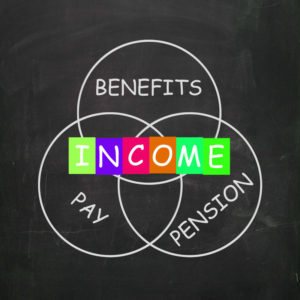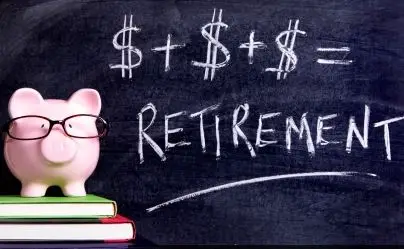
Whether or not we like to admit it, getting older inevitably creeps up on all of us. And with old age comes the inability to work as hard as we did when we were younger. This necessitates the need for retirement funds and a retirement plan for most people. Over much of the twentieth century, companies put money into pension funds to help their more mature employees maintain a reasonable standard of living in their golden years. Social Security was also set up to help prevent poverty for those who reached retirement age. But as you save money and invest in your future, because of the severity of the consequences of getting it wrong, there are a few things you must be sure to get right.
Defined Benefit Plans
During the age of big industry (i.e. prior to 1980) companies like General Motors, Ford, IBM, and GE offered retirement plans of the “Defined Benefit” type, which is a company pension plan in which an employee’s pension payments are calculated according to length of service and the salary they earned at the time of retirement. Unfortunately, during good times when their endowments rose due to great stock market returns, companies began raiding their pension plans. Then when the market fell they were under funded. In response “defined contribution” plans were developed.
The Rise of the 401k
In the 1980s, the IRA and 401k began to supplant the traditional defined-benefit pension. These plans support employees with a defined contribution and are now common in most workplaces. Many companies, both large and small, offer their employees a 401k plan to help them save money toward retirement. Some of these allow investment in index funds like those offered by Vanguard while others will use investment firms like Blackrock, UBS or State Street to offer mutual funds that attempt to pick and choose stocks and bonds that can hopefully beat the market.
Employers Frequently Match Funds
What many people fail to realize regarding their company 401k plan, is the possibility that their employer is ready to help them out with retirement savings. This will oftentimes come through employer matching funds. Some businesses will match a predetermined amount dollar for dollar. Others might supplement the contributions of their employees at a rate of 25 or 50 cents on the dollar. Regardless of the amount that your employer promises to match, it’s a good idea to contribute enough to get the full amount since it is essentially “free money”.
One of the most common employer contributions is a 50 percent match on the first 6 percent of an employee’s salary. The median income for an American worker is around $50,000. An employee who contributes 6 percent of his salary would put $3,000 toward retirement in a given year. A 50 percent match would add $1,500 to the $3,000, effectively giving a return of 50 percent before any capital gains or dividends. Furthermore, not meeting the threshold to reach the full match is basically giving money to your employer.
Your Taxes Can Go Down
Few people really enjoy giving money to the government. The 401k provides a way to cut down on the amount you give to Uncle Sam. IRA’s and 401k’s are tax advantaged accounts that defers the tax that you’d pay on your contributions. For example, in the example above, if that the employee is in the 15 percent tax bracket… a person making $50,000 who contributed $3,000 toward a 401k plan could expect to see his or her tax bill cut by $450 in the current year. Additionally, any capital gains and dividends would not be taxed until a retiree actually starts withdrawing the funds, hopefully after age 59.5 because there’s usually a 10 percent penalty for taking out any money before this point under most circumstances.
There Are Annual Limits
The government does not want people to forego paying massive amounts of taxes every year. Therefore, there are limits to how much income a person can defer in a 401k plan each year. As of 2017, the maximum employee contribution is capped at $18,000. This amount can vary from year to year as the government adjusts for inflation. The employer match is not included as part of this limit.
The game has changed when it comes to retirement funding. Employees have to take control of their own planning. The 401k provides a vehicle that can allow an employee to do so while cutting down on their tax bills in the current year. Those who start early should be able to amass a solid next egg, but even those who are late getting started can still improve their financial situations by socking money away for the future.
You Might Also Like:


